Welcome to the tenth and final part of our “Learning to Sew for Beginners” series here on the Bernina Blog. Today, we want to focus on the proper cleaning and care of our machines. Just as with home cleaning, the regular cleaning of our machines is important for the durability and reliability of our sewing machines. Particularly at the start of the autumn and winter period, many fluffy, soft fabrics are sewn, which often leaves a great deal of lint underneath the machine. Not only this, but also thread remnants, broken needles and dust lint should not be left inside our machines for any longer than necessary. A long relationship with your machines relies on regular and proper care. Today, I will show you what this entails.
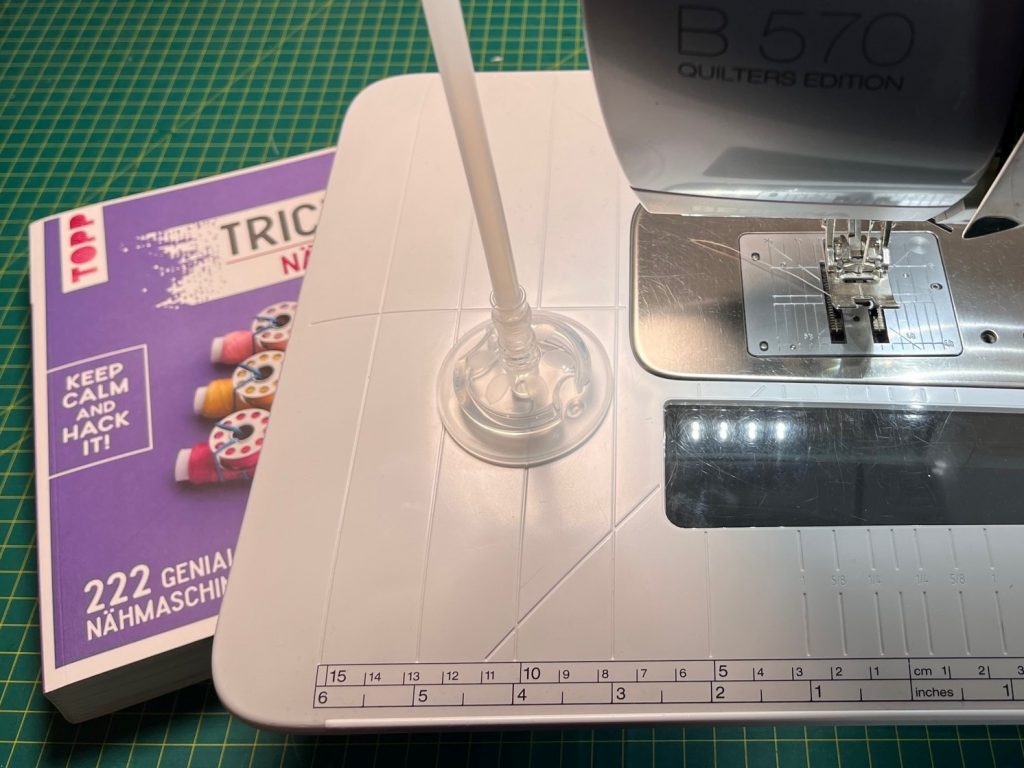
Cleaning and care tools
There is not much required for correct cleaning and care:
- A microfiber cloth (slightly dampened)
- The proper sewing machine oil (always included with the machine)
- A small brush or a paintbrush (always included with BERNINA machines)
- A pair of tweezers
- New needles

Tools I have added to the list over the years:
- Vacuum cleaner
- A drinking straw attachment; this is available in the drugstore with the baby bottles, pacifiers and the like. It fits onto vacuum tubes and can be used to wonderful effect to clean out your machine.
You should not use a compressed-air canister under any circumstances. Here, you run the risk of simply pushing the dust lint deeper into the casing of your machine, and we don’t want that. On the contrary, we need to get it out! After all, you don’t want the inside of your machine to look like the machine in this post.
Proper cleaning and care
Cleaning can be started right away. For safety reasons, first switch off the sewing machine. Most of the steps can be carried out when the machine is switched off.
First, we remove:
- the presser foot
- the sewing needle
- the stitch plate
- the sewing thread
- and the bobbin case

I have become accustomed to vacuuming the machine first. For this, I use the straw attachment, turn down the power of the vacuum cleaner, and vacuum the machine thoroughly. With the attachment, you can also get into the smallest recesses. As an alternative to the straw attachment, you can also use a keyboard brush attachment if you have something like that. Avoid metal vacuum heads!
I am not the only one using a drinking straw attachment for vacuuming 😉 A wide range of vacuum heads, as well as interdental brushes, are reportedly suitable for cleaning in the hook compartment. However, I have not yet tried this out. So far I have been using the brush supplied by BERNINA, the BERNINA tweezers, and my vacuum cleaner. This makes it very easy to clean lint, thread remnants and dust from the hook compartment.
Cleaning the Hook
Please pay attention to the hook race and avoid metal tips in this area, as the hook race should not be scratched under any circumstances! Even under the stitch plate, there are unwelcome dust traps; get them cleaned out.
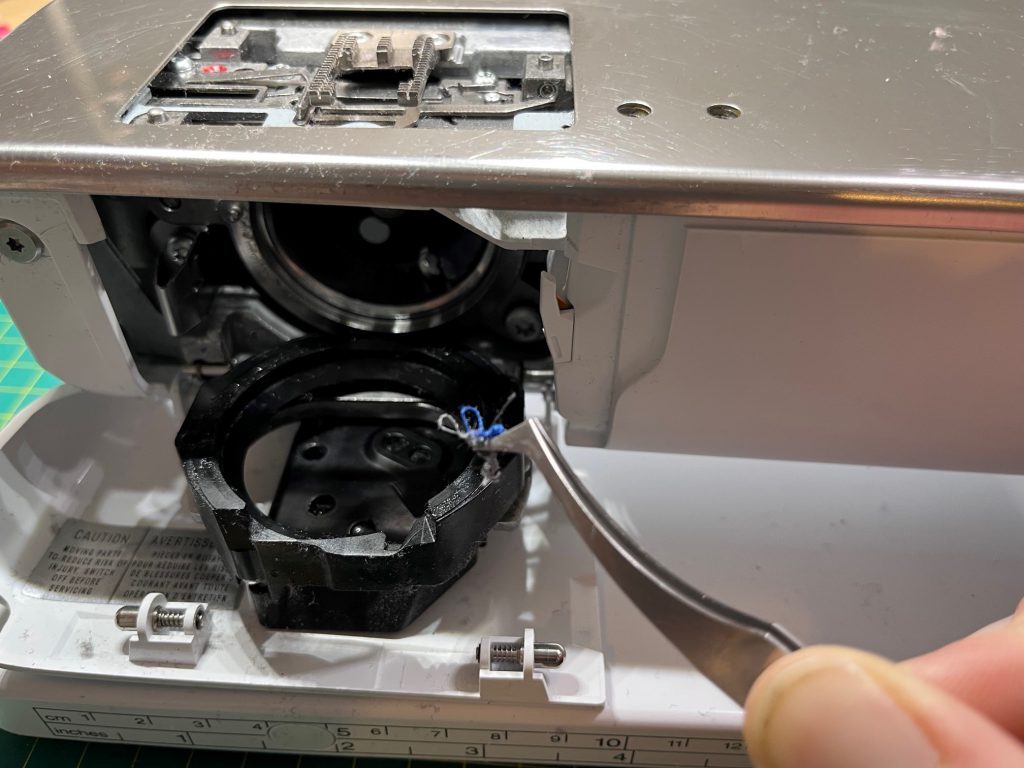
Do you have a thread cutter on your machine? Then please don’t forget to clean it as well. To do so, the machine must be switched on. The machine menu explains exactly how to clean the thread cutter.
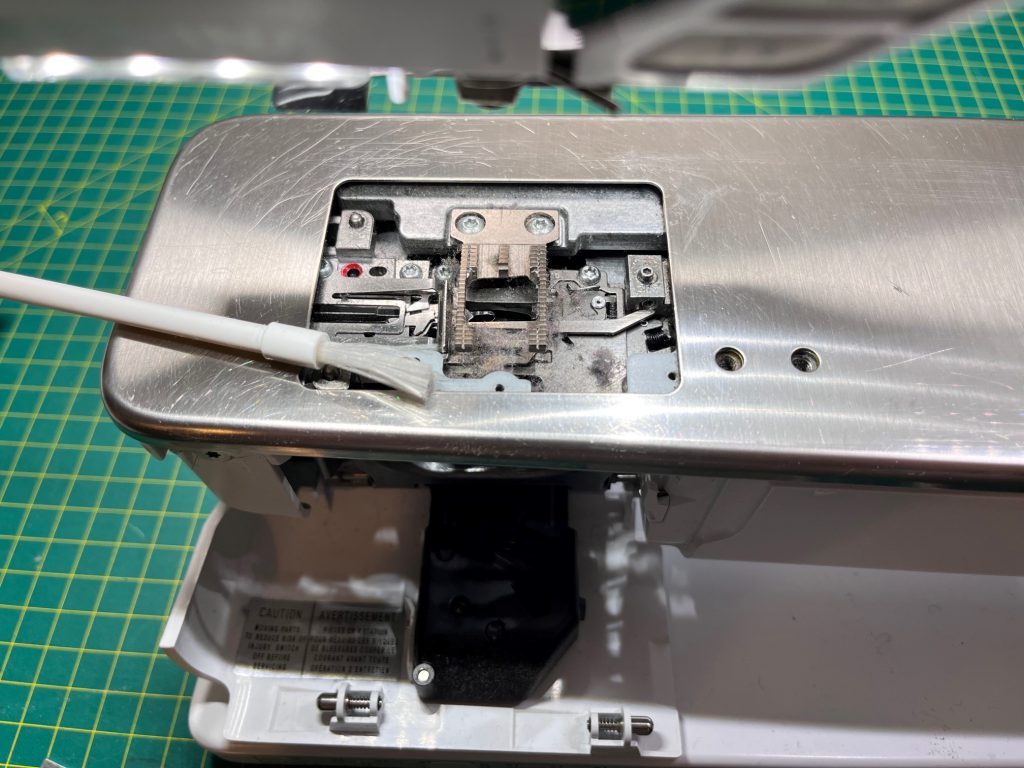
Have all lint, thread remnants etc. been removed? Then the machine is wiped off again from the outside with the damp microfiber cloth (it should really only be very slightly damp and in no way dripping with water).
Oiling the sewing machine
Once everything is nice and clean, your machine should be freshly oiled. Various places are oiled, depending on the hook model in your sewing machine.
The operating instructions for your sewing machine describe where the machine can be oiled. However, the corresponding item in the menu of some BERNINA series also provides you with this information. Or you can watch the corresponding video on the BERNINA channel. On the BERNINA Youtube channel, there is a video for cleaning and maintaining each sewing machine series (Click here to go to the Bernina channel).
This video, for example, shows you how to oil the BERNINA hook:
The Bernina Hook is used on the Bernina 4 and 7 Series machines as well as on the new 5 Series models (B 500, B 535, B 540, B 570 QE after 2017).
You can see that information is available to you in several places, as correct care and fresh oil is essential for the longevity and reliability of your machines. Please only use the oil supplied and sold by BERNINA.
Stay away from cheap oils
Of course, different oils are used for sewing machines and overlockers, but not all sewing machines use the same oil. For example, the BERNINA Hook requires a different oil than a Rotary Hook (the oils differ in their composition and viscosity). The oil supplied by BERNINA is a high-quality, resin-free and acid-free oil with the right consistency, which is suitable for your machine. You can purchase replacement oil from your dealer.
One thing is certain: you should stay away from cheap oils and especially cooking oil!

After oiling, reassemble your machine, treat it to a fresh needle, and first sew a few test seams on a remnant.
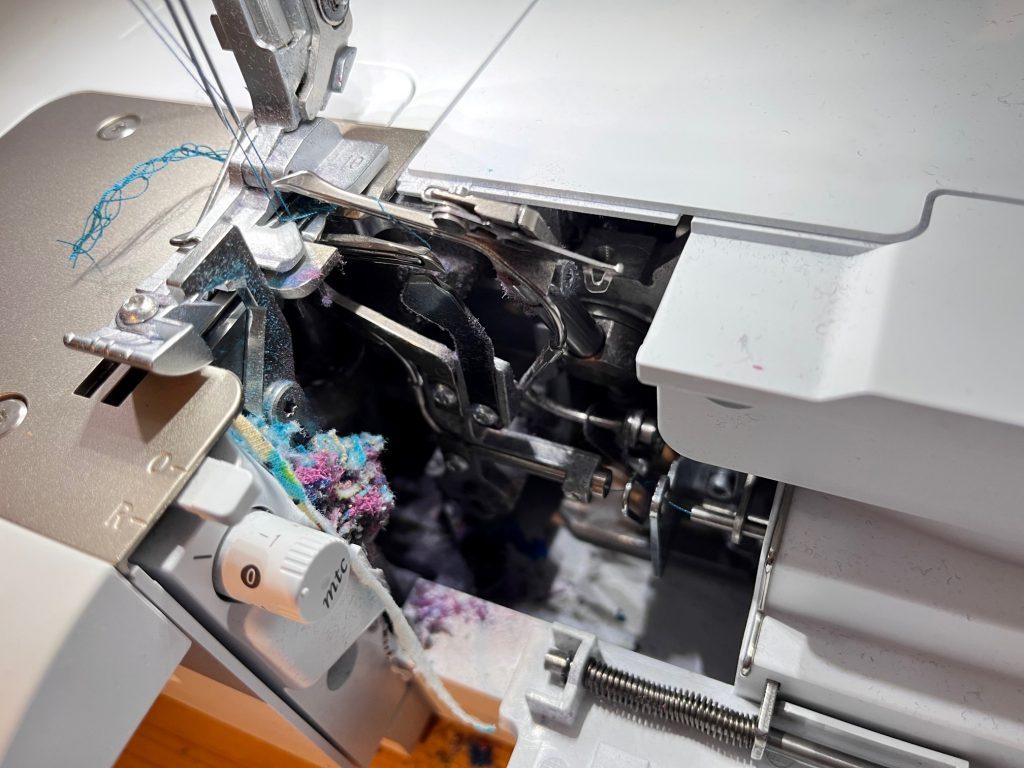
Your overlocker will also appreciate regular cleaning and a small drop of oil. Here, behind the flap, there are numerous dust bunnies and fabric scraps, and in my opinion, even more than imagined.
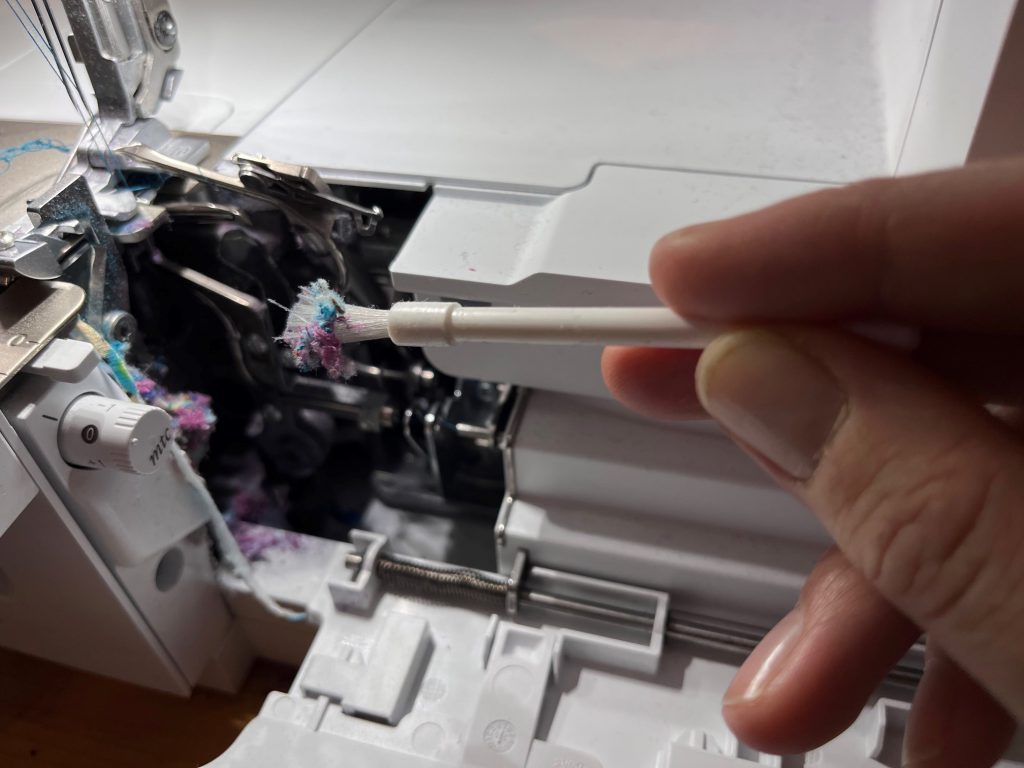
I watched this video before I used my BERNINA L 850 for the first time and then cleaned it immediately; a fluffy teddy fleece just gets into every gap ;-):
Regular maintenance
It can’t be said enough: regular care is important for your machine. But what is the time period for this care? And what does regularly mean?
Some machine models tell you that they need fresh oil. In that case it is really necessary and you should oil the machine quickly! It is better if you clean and oil your machine more often. However, there is no cover-all answer; it will always depend entirely on the use of your machine. For example, did you get the needle “glowing” with a large sewing project? Then cleaning and care is always appropriate. For me, there are various points of reference. One of these is the sound of the machine. As your machine gets louder and louder, cleaning and oiling is always a good idea.
After sewing a very fluffy lint-producing fabric, I also like to grab a cloth, a brush and oil. Or before starting a project. Pay attention to your machines and care for them, so that you can enjoy them for a long time.
Proper cleaning and regular care for your machine is essential! It will thank you with beautiful sewing results 🙂
 BERNINA Corporate Blog -
BERNINA Corporate Blog -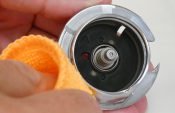

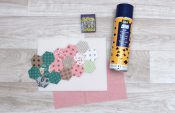
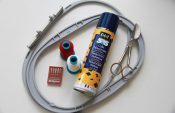
0 Responses